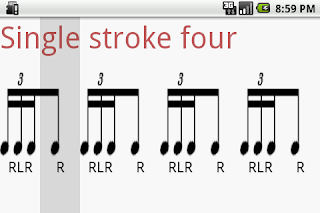Come on, just admit it! You
are a little nostalgic and fondly remember the good old days when a man was a man, a mouse a mouse and a synth ... well, when a synth was a pocket calculator or the other way around.
Casios strange VL-1 instrument sold 1,000,000 units between 1979 and 1984. Trio, the German band, used it to record their huge hit "DaDaDa", and bands like Human League, Devo, The Cars followed suit. And 30 years later it is still backing tracks by Moby and Fergie.
But you don't have to search Ebay to enjoy playing the "Fantasy" sound over a nice "Rock-2" blip. Now you can have the "Unterlanders Heimweh" demo tune right there when you need it, feeling a little lowlandish homesick. The VL-Tone app contain the factory presets and rhythm patterns in all their distorted and noisy glory, carefully sampled from an original Casio VL-1. Never have so few bits been sampled by so many for so little, to paraphrase Churchill.
So, download and enjoy! But note that this software is still a beta. It
is tested on a few phones, so it should work quite well, but don't hesitate to contact me via
software(at)skrivarna.com if something seems strange. I will do my best to fix bugs quickly!
Currently known limitations:
* ADSR. This version of the app is a sample player, not an emulator. This makes it more or less impossible to program your own sounds. Maybe emulation for ADSR programming will be included in a later version. Maybe not.
* The sustain and decay of the samples are currently a bit rough (to say the least). Will be fixed when I get the time.
* The sequencer is not included right now. If enough people encourage me to implement the step sequencer in the next version I will.* The LCD display is not of much use.
* The samples contain all the noise and distorsion from my original instrument. And I suppose this is the way it will be, at least for the sounds. But maybe the demo and the rhythm pauses could be cleaned up a little by adding a noise gate. Also, the s/n ratio could be increased with some gentle compression.
* Would it be interesting to have a choice between the lined samples presented here, and some captured with the internal speaker and a mic? I suppose that would add more character to some of the sounds. Let me know!
Now go out and play!
















